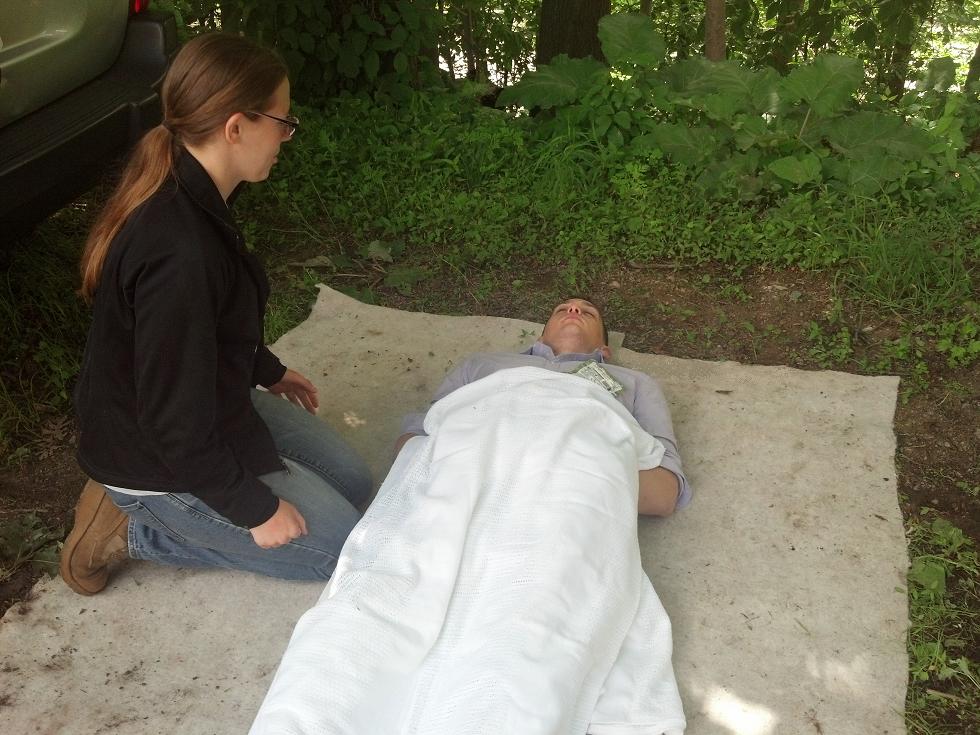
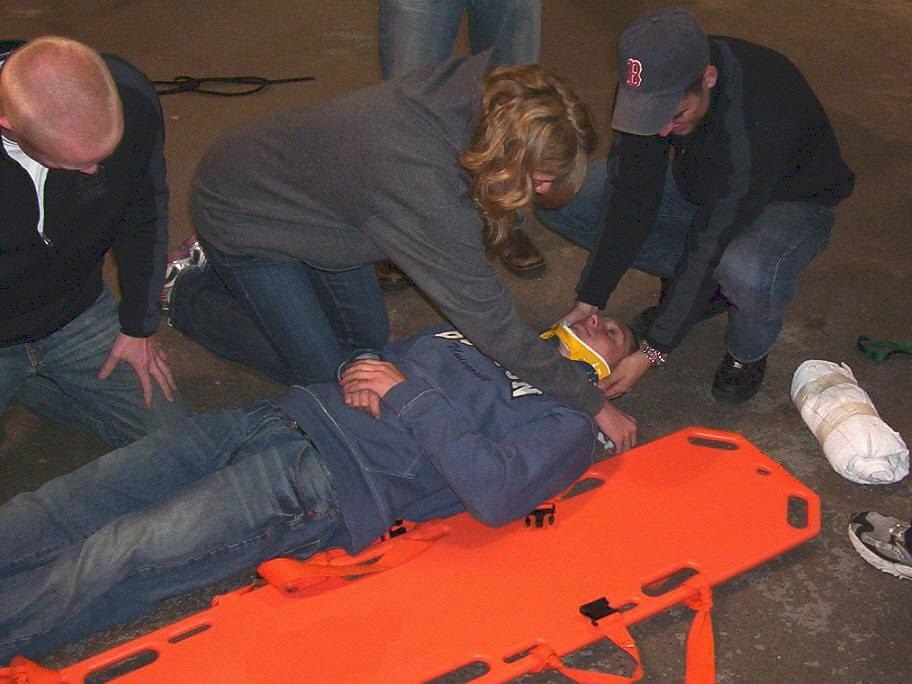
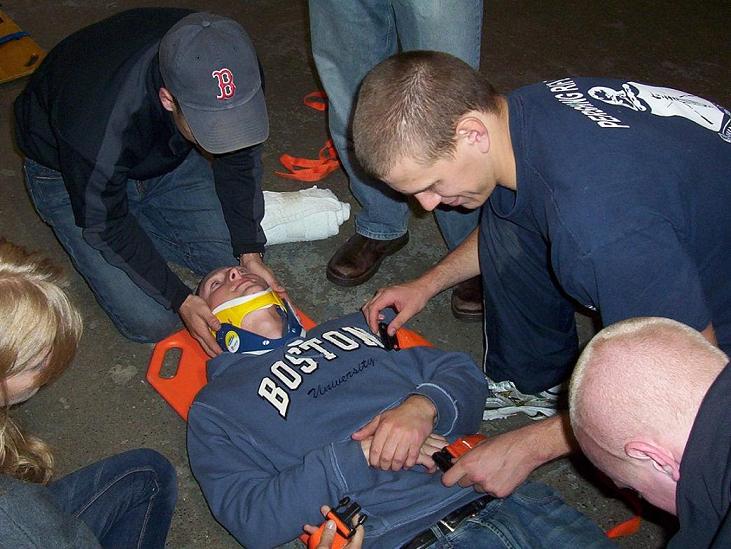 Unfortunately, medical emergencies can sometimes be a part of life, particularly in the military. With this fact in mind, B-12 Pershing Riflemen work throughout the year to augment their existing ROTC medical training and to prepare their candidates and members to be able to quickly and appropriately deal with these types of emergencies, whenever and wherever they encounter them. Although e are unable to legally certify its personnel to any officially accepted level of medical expertise, we believe that every cadet can be taught basic medical knowledge and skills, which will help them overcome the natural tendency to get overwhelmed in an emergency situation, and allow them to appropriately treat and stabilize a casualty.
Unfortunately, medical emergencies can sometimes be a part of life, particularly in the military. With this fact in mind, B-12 Pershing Riflemen work throughout the year to augment their existing ROTC medical training and to prepare their candidates and members to be able to quickly and appropriately deal with these types of emergencies, whenever and wherever they encounter them. Although e are unable to legally certify its personnel to any officially accepted level of medical expertise, we believe that every cadet can be taught basic medical knowledge and skills, which will help them overcome the natural tendency to get overwhelmed in an emergency situation, and allow them to appropriately treat and stabilize a casualty.
Each member of B-12 expects to become a commissioned officer upon graduation and completion of the ROTC program. As such, the objective of the medical training modules is to teach each B-12 candidate and member how to direct and manage the handling of a casualty from a leadership position, as well as how to personally prevent, identify, and treat life-threatening conditions during the first ten minutes, before more highly-trained medical personnel can arrive on the scene.
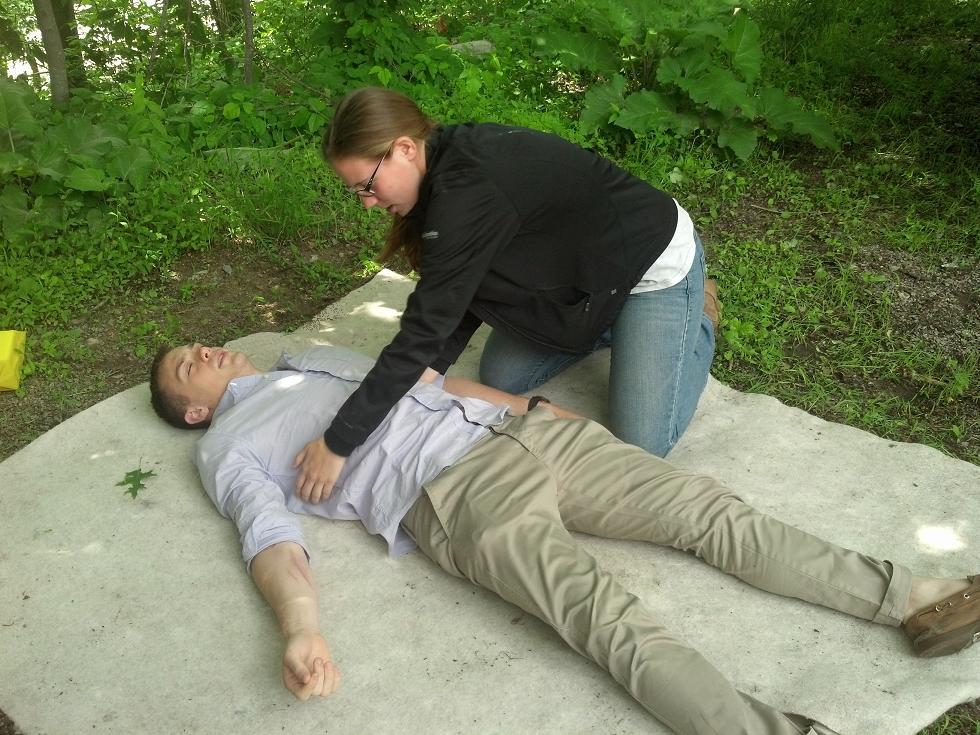 The methodology of the training is to teach, demonstrate, and then repeatedly drill, all of the actions necessary to rapidly assess the situation and the casualty and to perform the immediate interventions required to initially stabilize the casualty. Due to the time constraints and the nature of a medical emergency, this type of training must be focused much more on action than theory, but B-12 first ensures that members and candidates develop a basic understanding of the underlying pathophysiology of illness and injury. This prepares them to better assess and handle the casualty, as well as to prevent or delay other complications.
The methodology of the training is to teach, demonstrate, and then repeatedly drill, all of the actions necessary to rapidly assess the situation and the casualty and to perform the immediate interventions required to initially stabilize the casualty. Due to the time constraints and the nature of a medical emergency, this type of training must be focused much more on action than theory, but B-12 first ensures that members and candidates develop a basic understanding of the underlying pathophysiology of illness and injury. This prepares them to better assess and handle the casualty, as well as to prevent or delay other complications.
As future officers, B-12 members understand that they must look after the health and welfare of the personnel under their command at all times, and the best way to do that is to prevent them from becoming ill or injured in the first place. Thus, a special portion of the medical training module is focused on understanding how leadership decisions can affect the physical and mental health of subordinates.
B-12 divides its medical training into three general categories: Illness, Trauma, and Scene Management.
ILLNESS
An illness is any medical problem that is not the result of a physical impact to the body. They tend to develop over a period of time, often due to an environmental cause, and thus many illnesses can be prevented, or at least detected early enough to reverse their symptoms before they cause incapacitation. B-12 medical training focuses on the most common life-threatening illnesses that are likely to arise in a military situation.
The pathophysiology and symptoms of medical emegencies such as hyponatremia, dehydration, anaphylaxis, HACE/HAPE/AMS, hypoglycemia, hyperglycemia, heat stroke, heat exhaustion, hypothermia, and respiratory problems are discussed, with special attention paid to techniques for avoiding these problems in the first place. Students are taught how to treat an acute occurrence of each illness if it does develop, and are then drilled through simulations in which they must assess a casualty, identify the symptoms, determine the underlying cause of the problem, and recommend a course of action or treatment.
TRAUMA
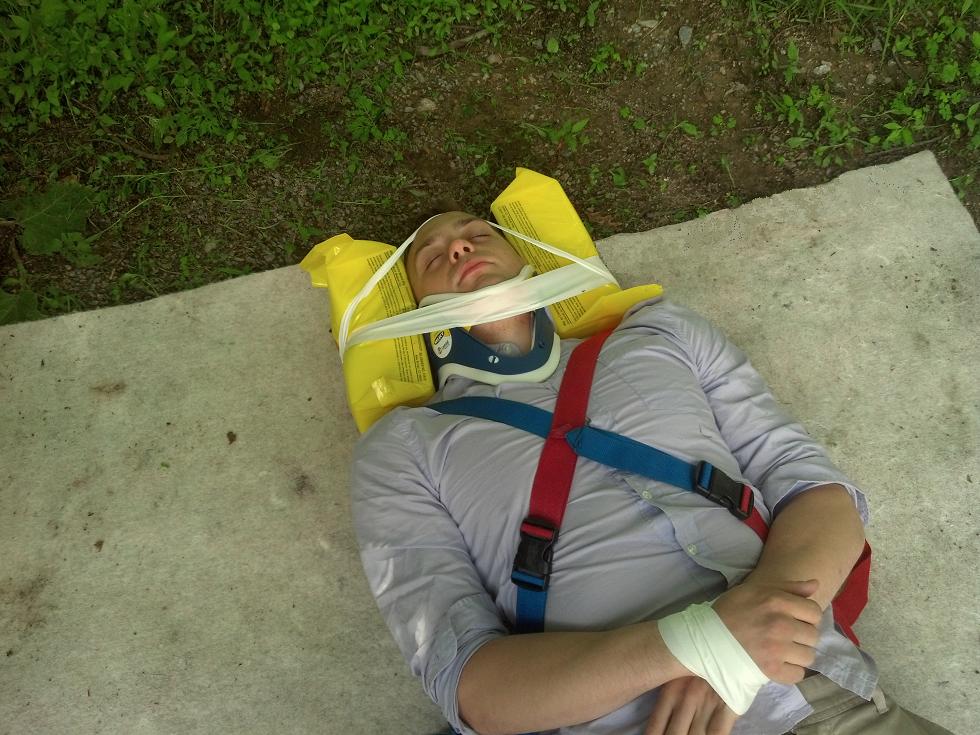 Traumatic injuries are not unique to the military, but battlefield trauma can be particularly gruesome and life-threatening. The immediate result of a traumatic injury is often very shocking, and requires rapid action to prevent permanent disability and death. To this end, members and candidates are taught the basics of scene safety, body-substance isolation, bleeding control, airway and respiration assessment and management, circulation assessment and management, hypothermia prevention and treatment, rapid full-body assessment, shock preemption and treatment, and how to appropriately move and secure a casualty onto a backboard for spinal immobilization.
Traumatic injuries are not unique to the military, but battlefield trauma can be particularly gruesome and life-threatening. The immediate result of a traumatic injury is often very shocking, and requires rapid action to prevent permanent disability and death. To this end, members and candidates are taught the basics of scene safety, body-substance isolation, bleeding control, airway and respiration assessment and management, circulation assessment and management, hypothermia prevention and treatment, rapid full-body assessment, shock preemption and treatment, and how to appropriately move and secure a casualty onto a backboard for spinal immobilization.
Students are then individually drilled through the assessment and treatment of a critical casualty, with emphasis placed on ensuring that any life-threatening conditions are identified immediately and that the required life-saving interventions are perfomed as soon as is appropriate.
SCENE MANAGEMENT
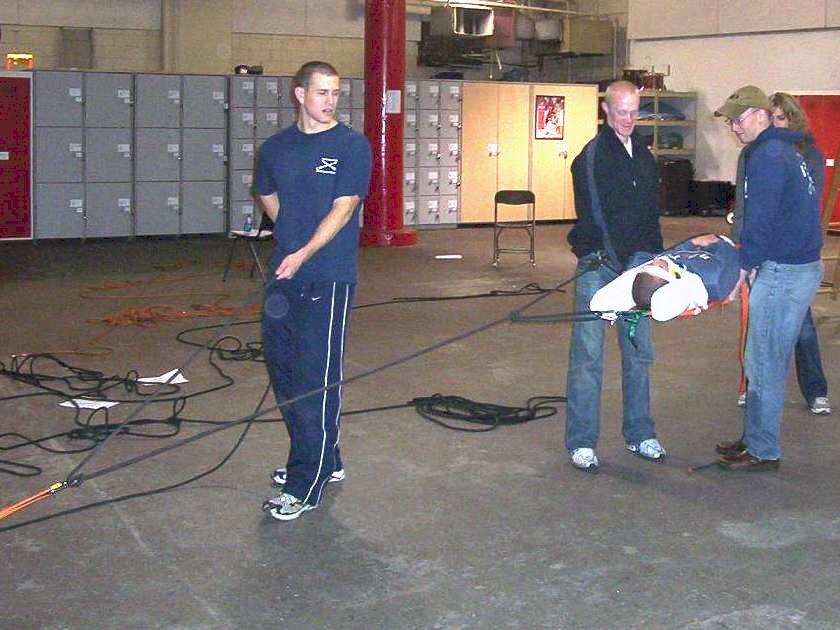 Once they have developed the ability to handle a critical casualty themselves, students then practice managing the scene while leading and directing a team of rescuers engaged in the treatment and packaging of such a casualty. Emphasis is placed on achieving the objective by adapting to the situation and the equipment at hand, rather than relying on specific personnel and equipment which may not be available in the field. Students also practice safely evacuating a casualty down a slope, using the techniques learned in Rope Work training. Other medical-operational concepts and procedures such as Mass Casualty Incidents, Triage, Casualty Collection Points, and the 9-Line MEDEVAC Request, are also discussed.
Once they have developed the ability to handle a critical casualty themselves, students then practice managing the scene while leading and directing a team of rescuers engaged in the treatment and packaging of such a casualty. Emphasis is placed on achieving the objective by adapting to the situation and the equipment at hand, rather than relying on specific personnel and equipment which may not be available in the field. Students also practice safely evacuating a casualty down a slope, using the techniques learned in Rope Work training. Other medical-operational concepts and procedures such as Mass Casualty Incidents, Triage, Casualty Collection Points, and the 9-Line MEDEVAC Request, are also discussed.
Both candidates and members usually come away from the training sessions with increased confidence that they will be able to handle a medical emergency appropriately if they happen to encounter one, and with the ability to pass down their new knowledge and skills to future candidates and members of Pershing Rifles at Boston University.